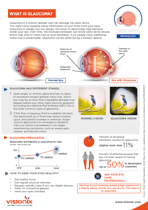 What is Glaucoma
What is Glaucoma
Glaucoma is a chronic disease that can damage the optic nerve.
The optic nerve supplies visual information to your brain from your eyes. Over time, the increased pressure can erode optic nerve tissues which may lead to vision loss or even blindness. If it’s caught early, additional vision loss is preventable. Glaucoma can be detected by a fundus camera.
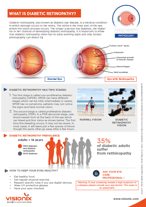 WHAT IS DIABETIC RETINOPATHY?
WHAT IS DIABETIC RETINOPATHY?
Diabetic retinopathy, also known as diabetic eye disease, is a medical condition in which damage occurs to the retina. The retina is the inner part of the eye, where the vision process occurs. The longer a person has diabetes, the higher his or her chances of developing diabetic retinopathy. It is important to know that diabetic retinopathy often has no early warning signs and only fundus
photography can detect it.
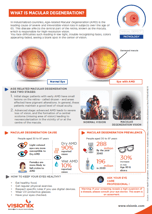
What is macular degeneration?
In industrialized countries, Age-related Macular Degeneration (AMD) is the
leading cause of severe and irreversible vision loss in subjects over the age of
65. This disease affects the central part of the retina, known as the macula,
which is responsible for high-resolution vision.
You face difficulties such reading in low light, trouble recognizing faces, colors
appearing faded, seeing a blank spot in the center of vision.
 What is Cataract?
What is Cataract?
A cataract is an opacification of the lens of the eye which leads to a
decrease in vision.
Cataracts often develop slowly and can affect one or both eyes.
Symptoms may include faded colors, blurry or double vision, halos around
light, trouble with bright lights, and trouble seeing at night.This may result
in trouble driving, reading, or recognizing faces.
Cataracts cause half of all cases of blindness and 33% of visual
impairment worldwide.
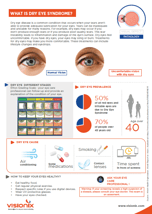 What is Dry Eye Syndrome?
What is Dry Eye Syndrome?
Dry eye disease is a common condition that occurs when your tears aren’t
able to provide adequate lubrication for your eyes. Tears can be inadequate
and unstable for many reasons. For example, dry eyes may occur if you
don’t produce enough tears or if you produce poor-quality tears. This tear
instability leads to inflammation and damage of the eye’s surface. Dry eyes feel
uncomfortable. If you have dry eyes, your eyes may sting or burn. Treatments
for dry eyes may make you more comfortable. These treatments can include
lifestyle changes and eyedrops.
 What is Keratoconus?
What is Keratoconus?
Keratoconus involves steepening and thinning of your cornea, which is the front clear window of your eye. Cornea helps in focusing light at the retina to form a perfect image.
Keratoconus is a multifactorial disorder which affects 1 in every 2000 people. Some causes are identified, such as genetic predisposition, hormonal and environmental facors, eye rubbing and mechanical stress. Keratoconus leads to higher sensitivity to light. It causes blurriness, shortsightedness in your vision, halos and ghosting near a light source. Common symptoms of keratoconus include progressive bulging of your cornea into a cone-like shape, thinning of your cornea and impaired vision.
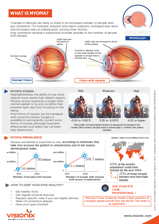 What is Myopia?
What is Myopia?
Changes in lifestyle are likely to result in an increased number of people with
eye conditions. For example, reduced time spent outdoors, increased near work and increased rates of urbanization, among other factors,
may contribute towards a substantial increase globally in the number of people with myopia.

